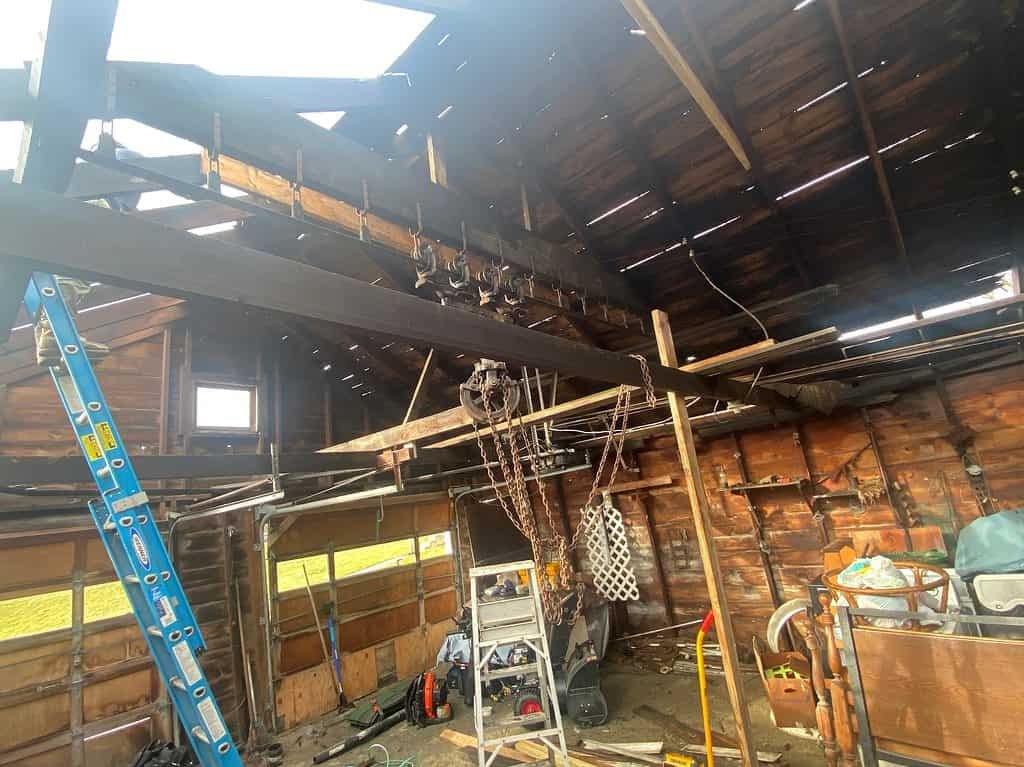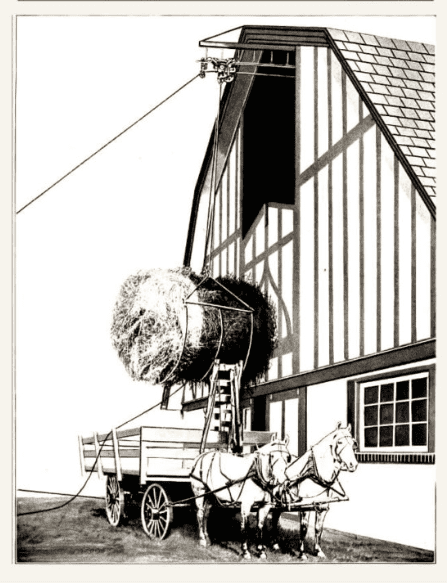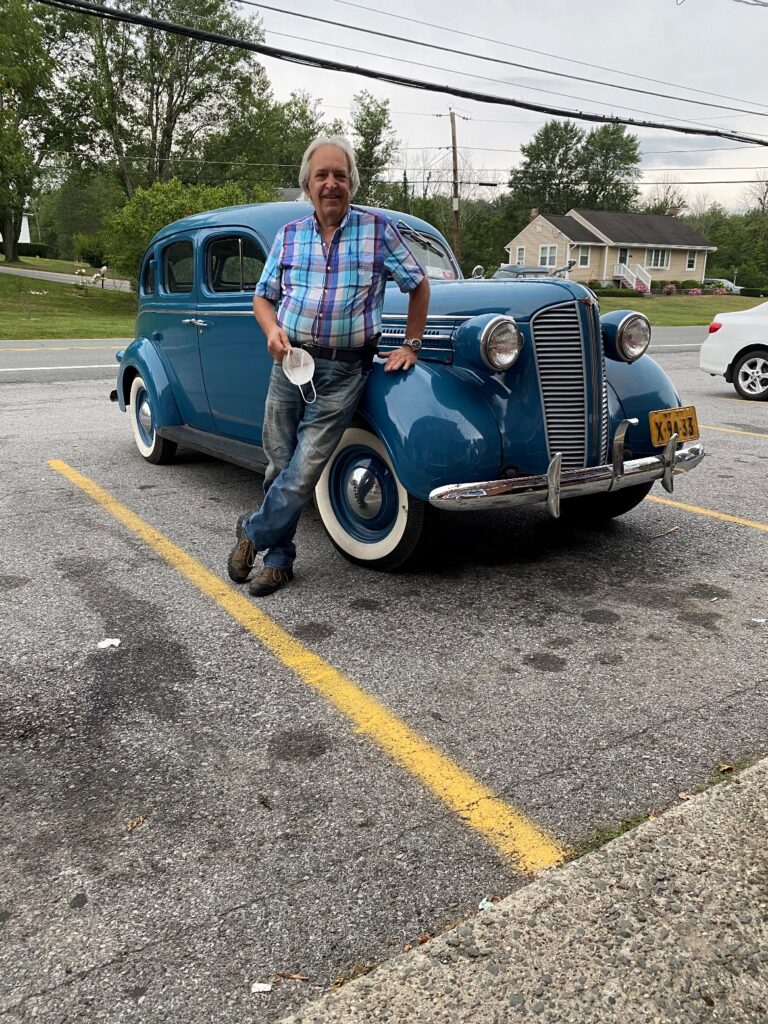Sometimes, when we least expect it, we discover something which suddenly illuminates our family’s history which has mostly faded from memory. Recently, I was working at putting a new roof on one of my old garages, replacing damaged wood and installing new shingles. While doing this, I happened to look up at the old trolley system and chain hoist I had used in my youth while changing engines in cars.

I took it for granted when I was young this was simply normal, but studying it now, I realized it is really a novel design which greatly improved one’s capabilities. This trolley system, manufactured by Louden is a mechanical device which allows heavy loads to be picked up and moved with little effort by a single person. The gear ratio of the chain hoist allows the height of the item being lifted raised to practically any height, precisely.
Dad used this, and taught me how, to lift an engine out of one vehicle, move it over and place it on the floor, and then pick an engine out of a second vehicle and move it over and drop it into the first one. It only took one individual! Granted, you had to develop a bit of skill to lift something to the correct height and to lower it to the exact position you wanted.
One of the original equipment’s designs was employed to move hay bales from the ground, into a barn, among other things. Again, it reduced the amount of labor required and sped up the process tremendously. The hay bale trolley system was developed after the Civil War. It greatly reduced the manpower needed to move hay into the barn storage area. From the 1860’s to early 1900’s, patents were issue and the design improved on, again and again. The one I have is a Louden merchandise trolley, not a hay bale trolley. From what I’ve found, this particular model was manufactured between 1910 and 1920.

A century ago, equipment was designed to be functional, dependable, and repairable. One didn’t simply throw away something as we do today if it needed repair. Granted today’s technology rapidly advances in many fields, much quicker than in previous decades which does add a bit of obsolescence to the equation. But, with equipment such as this trolley, while the design may be improved on by adding an electric hoist and motorized movement, it is still serves the same purpose and is still functional. Sometimes, we complicate things with all these “improvements” and all that happens is we create an increased chance of failure.
I’ve been educated the fewer moving parts, the less the possibility of things going wrong. For example, on my 1937 Dodge, there is nothing which is difficult to maintain or repair. The only issue I ever have is when those of the younger genre think this old man is waving and pointing at things while motoring down the highway when in fact, I’m using hand signals as the Dodge doesn’t have directional signals. Nor does it have power steering (“power steering by armstrong” is more like it), disc brakes, and so on, but it is fun to drive and take a ride down memory lane. In fact, my Dad did have a 1937 Dodge, and worked on it in this same garage.

If you’re driving around our community and not in a rush, or too busy texting on you cell phone to look up, you just may glance over and view a vintage barn. I wonder what you might find inside if you took a peek.